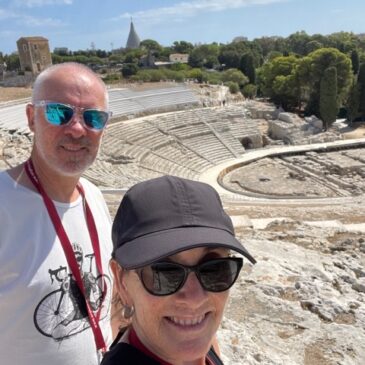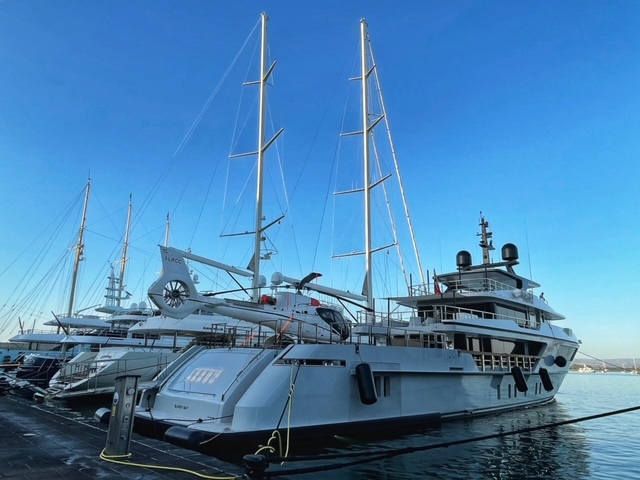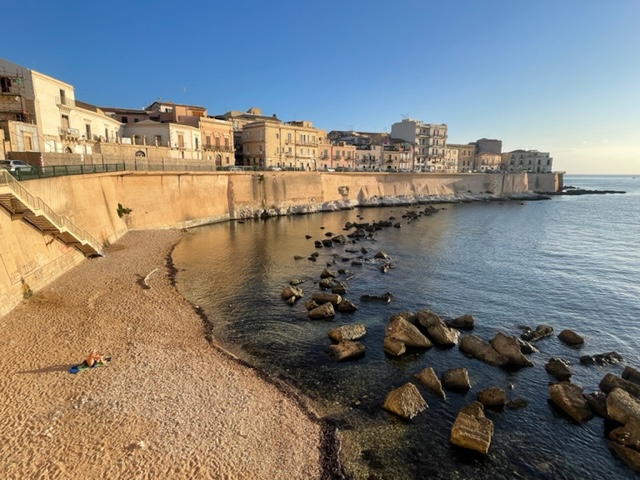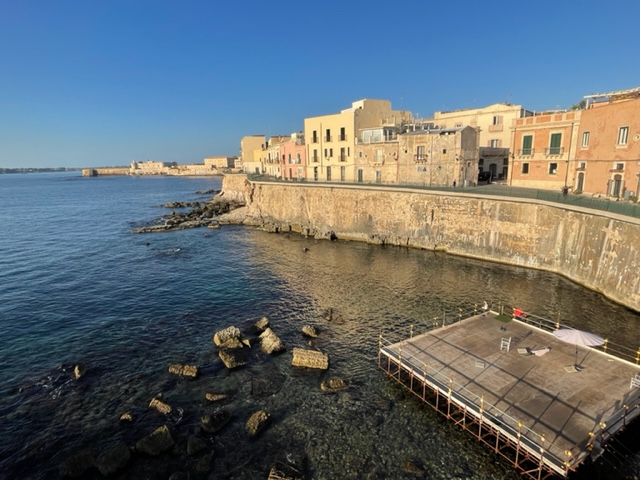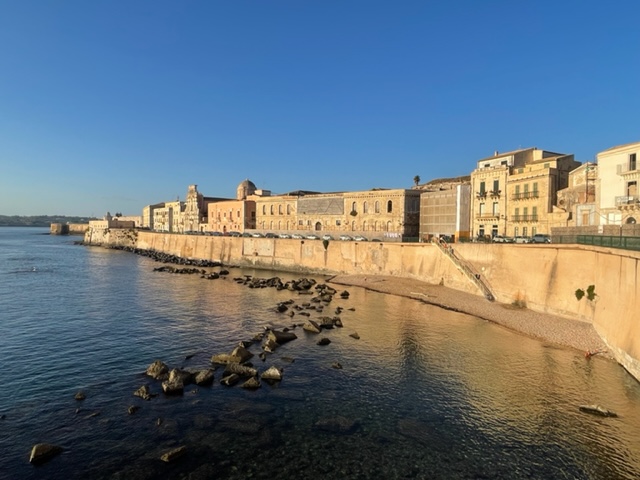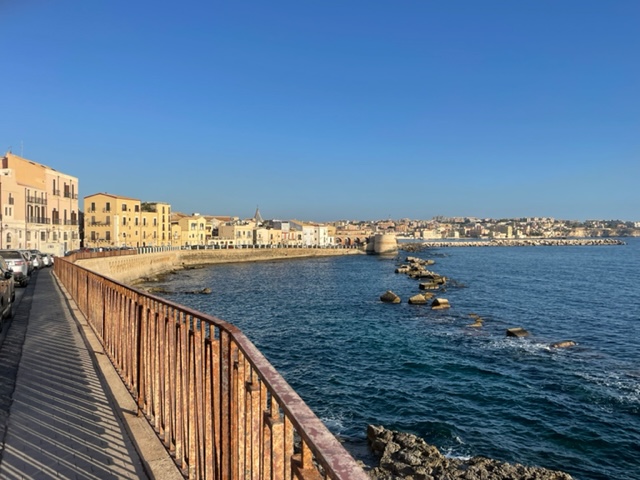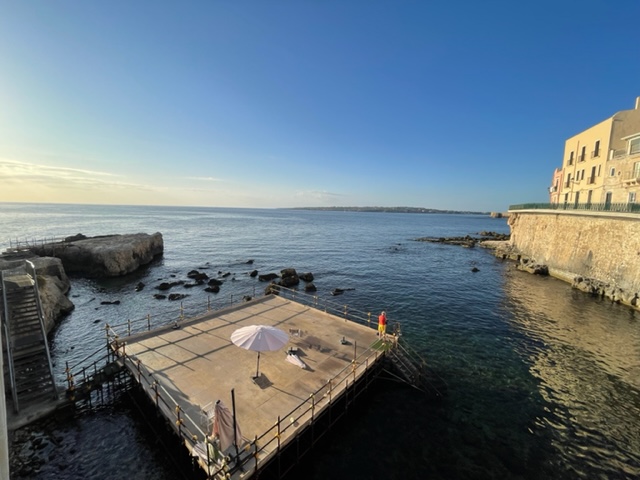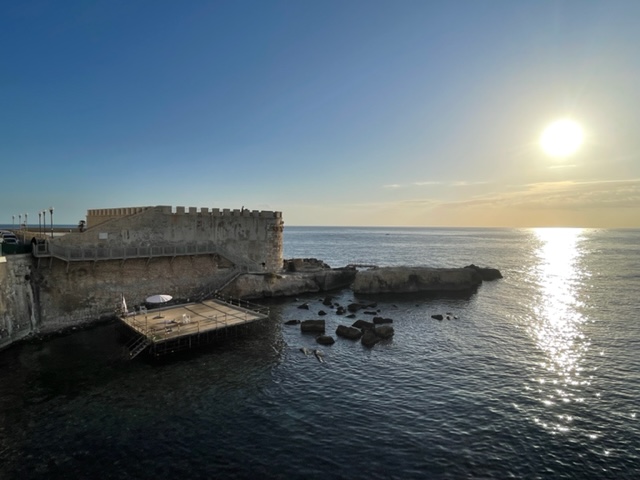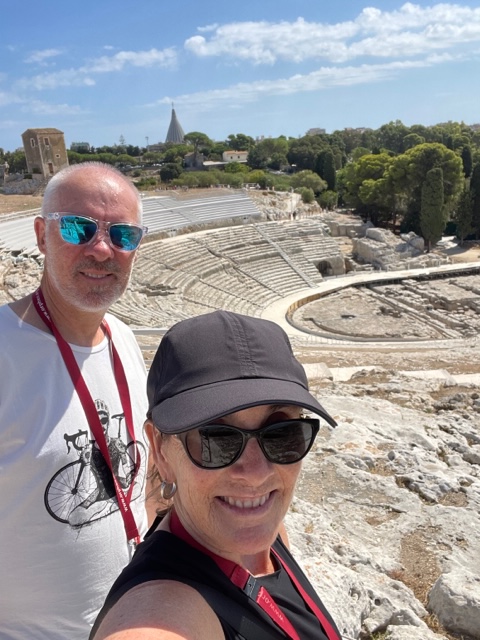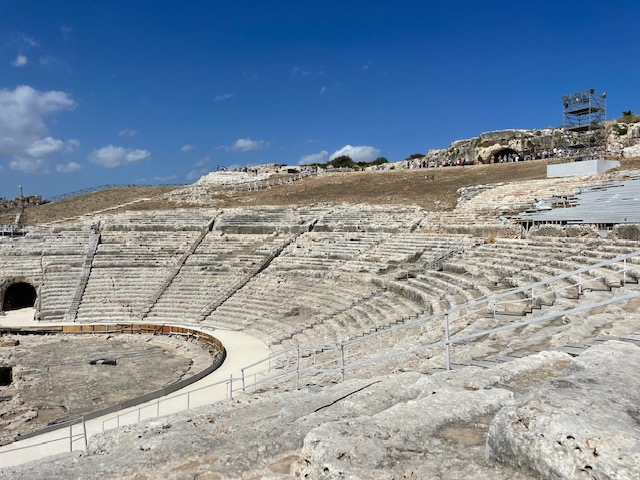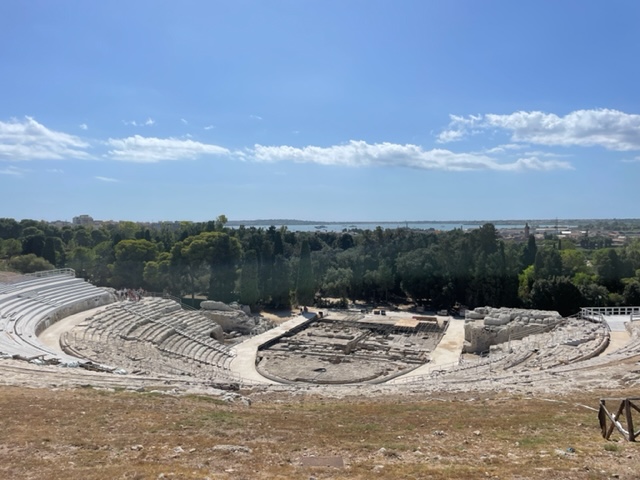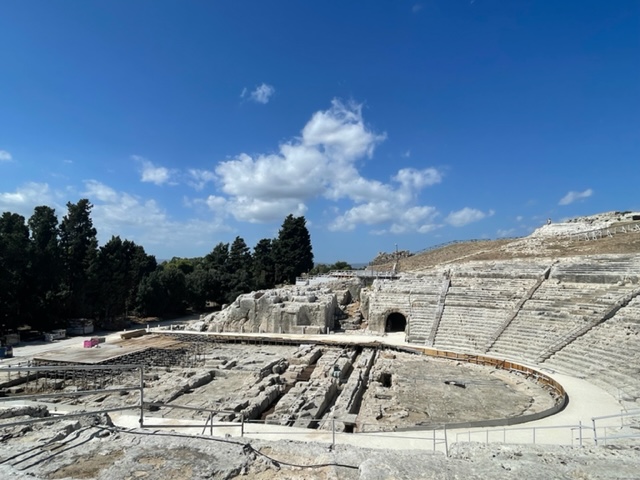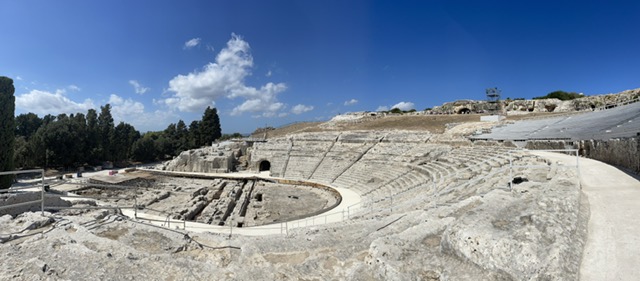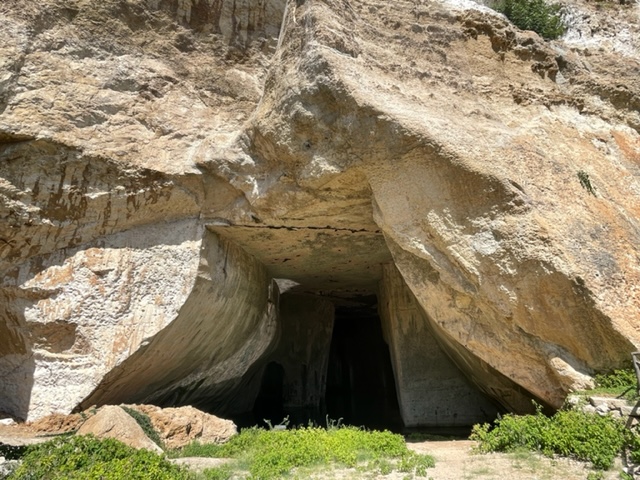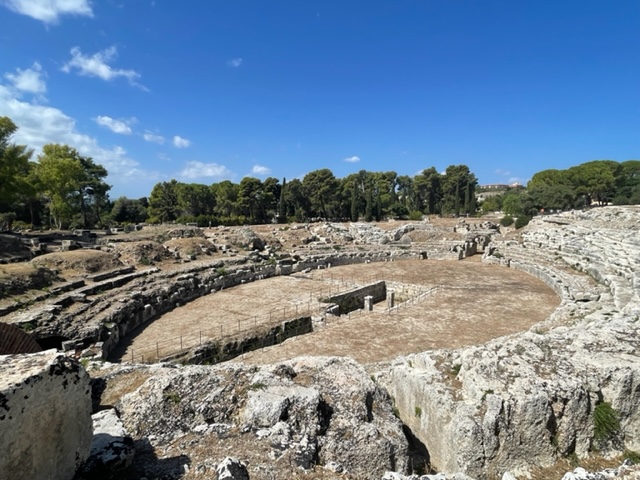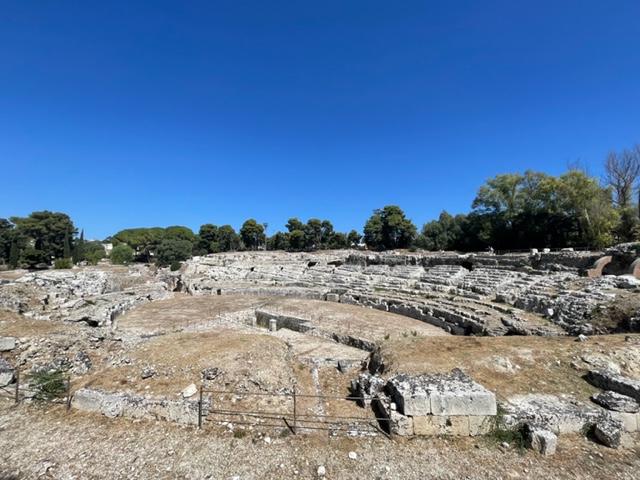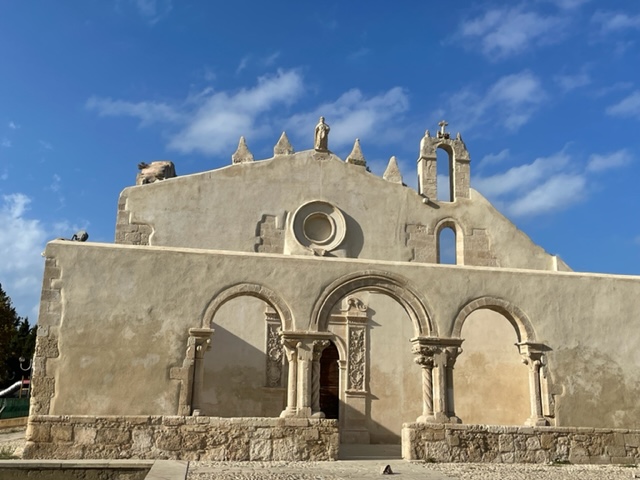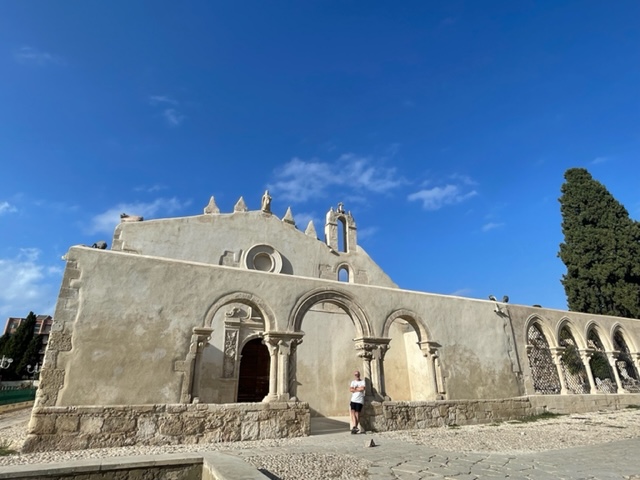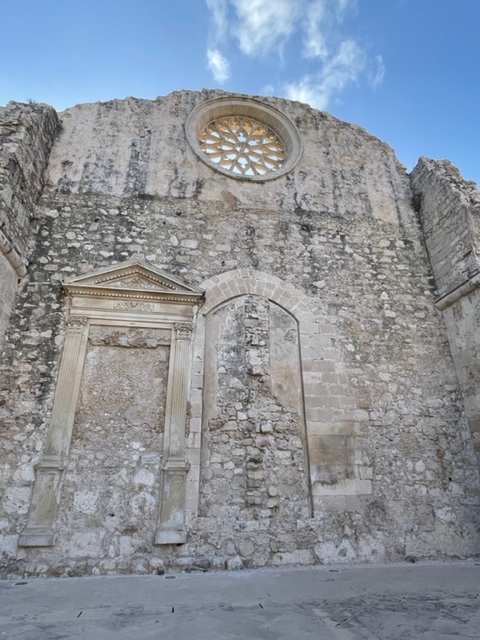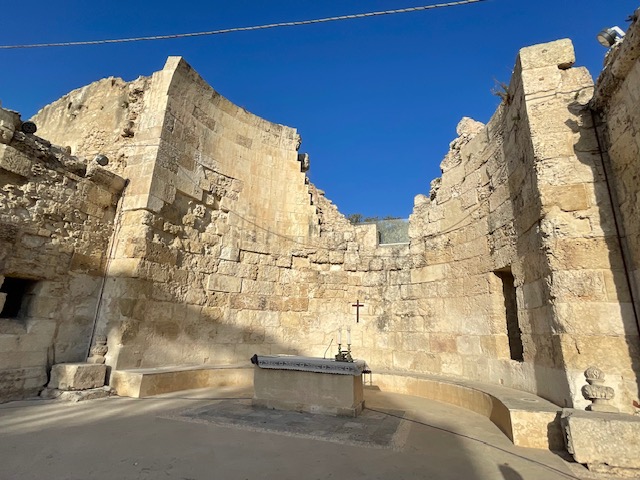Ortigia: Sat Sept 17 – Wed Sept 21
Accommodation link.
It was another beautiful morning and, thankfully, the hot wind wasn’t blowing today. We ventured out for a morning walk and did a complete lap of the island.
Our host had suggested taking the Hop On Hop Off bus tour as it’s a good way of getting around to see the whole island. It was also a means of getting out to the Neapolis Archaeological Park which we had planned to visit. I initially had thought we would walk the 30 minute journey out to the park but, given the heat, there was no way we were doing that.
We got on the bus just near our apartment, at stop 2, and the archeological site was at stop 13 so we got to see and hear a few things on the way. We learned that Syracuse was founded in 734 BC by Greeks settlers that came from Corinth and that Ortigia is the historic centre of the area. Like Catania, where we had just been, much of Ortigia was destroyed by the 1693 Mt Etna earthquake and the city was subsequently rebuilt in baroque style.
The Neapolis Archaeological Park was very busy, probably due to it being a Sunday, but we battled the many tour groups and spent a good two hours visiting the main sites. The three most noteworthy attractions for me being The Grotto of Cordari, where in 61 AD. St Paul apparently gave an address to the people of Syracuse, the 3rd century BC Greek Theatre, the most important historic site in Syracuse, and the 4th – 3rd century AD Roman Amphitheatre; the site of past Gladiator games and the 3rd largest amphitheater in Italy. I would recommend a visit to the archeological park if you’re ever in the area but would advise you to hire the audio guide as there is little (no?) information signposted throughout the park. I would also suggest to visit in the morning, or the late afternoon, as it gets rather hot in the middle of the day, as we found out when we were leaving.
The Hop On Hop Off bus Took us back in to Ortigia and we had a bite to eat and bought some supplies for dinner before heading back to the apartment to rest in the cool of the air conditioning.
We set out again at 4 pm to catch the open top bus to get around to stop 12, just before the archeological park, which was the stop for the Basilica of San Giovanni and Catacombs.
The Basilica dated back to the 6th century AD and the roof was destroyed in the 1693 earthquake. The roof is still missing today but it remains a consecrated Church where they still celebrate masses, funerals, weddings and baptisms. The Basilica is apparently dedicated to the city’s first bishop, St Marcian, who was tied to one of the pillars in 254 AD and flogged to death.
The underground catacombs occupy a vast area where it is thought there were up to 10,000 bodies buried and was a most impressive structure with hundred of niches carved into the walls of the many underground lanes.
You can only visit the Basilica and Catacombs at certain times and the ticket entry price, of €10 per person, covers the cost of a live guide who translates in Italian and English. However, she may as well have just spoken Italian because she was so heavily accented I could not pick up more than a couple of words when she was supposedly speaking in English. I had previously read reviews mentioning the difficulty in understanding the live guides so now I understand what they mean.
We used the bus to get back to Ortigia where we had an aperitivo near the Temple of Apollo before heading home for an early night; we are exhausted!
